Game warden: Wild boar shot in Tunbridge believed to have escaped NH reserve
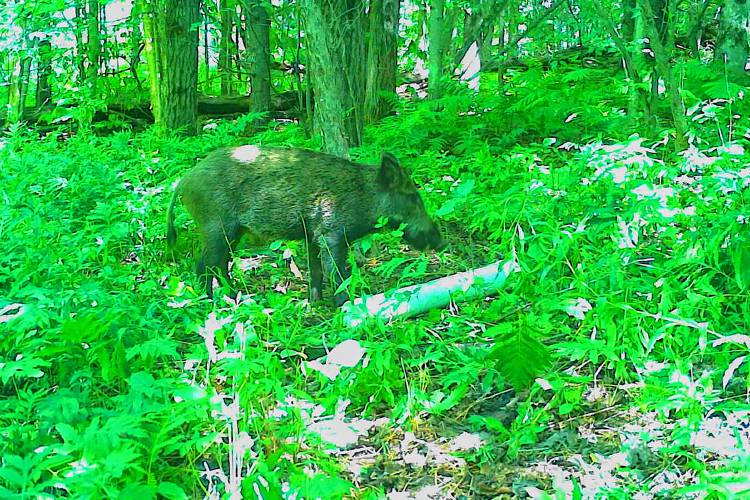
A male feral swine is captured by a game camera in Vermont's White River Valley this summer and was later shot. It is suspected to have escaped from Corbin Park, a private game preserve in New Hampshire's Sullivan County. (USDA photograph) —
| Published: 09-05-2023 6:26 PM |
TUNBRIDGE — Federal officials with the United States Department of Agriculture killed a feral swine in Tunbridge this summer, raising concerns about the presence of the highly destructive animals, which are rarely seen in Vermont.
Officials are still waiting on the results of DNA tests that could confirm the lineage of the swine, which was killed in July. But for now, there is “reasonable belief” that the animal crossed state lines, and traveled up the White River Valley from Corbin Park, said Sgt. Jeff Whipple, game warden for Central Vermont.
The private game reserve encompasses more than 25,000 acres in parts of Croydon, Grantham, Cornish, Plainfield and Newport, and is known for its secrecy and elite guest hunters, including former U.S. President Teddy Roosevelt and baseball legend Joe Dimaggio.
“Looking at the map, it’s quite a ways to come for a feral swine, but these animals are pretty resilient,” Whipple said.
Feral swine, which can grow to be 200-pound, wiry-haired beasts, are illegal to maintain on captive hunting reserves in Vermont. But reserves are less regulated in New Hampshire.
In 2019, a wild boar was killed by state officials in a gravel pit in Thetford, and genetic testing confirmed it had come from Corbin Park. In 2017, a 90-pound wild boar was struck and killed by a motorist on Interstate 89 near Exit 19 in West Lebanon. It also was from Corbin.
This summer in Tunbridge, after a week-and-a-half stakeout, the swine was ultimately felled near McIntosh Pond around the Royalton-Tunbridge town line, Whipple said. Federal officials set up a base station there and laid food out for the pig after sightings from residents across the two towns had sounded the alarm.
Prior to the killing, photos from a game camera set up at the site show a mother bear and two cubs approaching the food. The pig had other ideas.
Article continues after...
Yesterday's Most Read Articles
 Dartmouth administration faces fierce criticism over protest arrests
Dartmouth administration faces fierce criticism over protest arrests
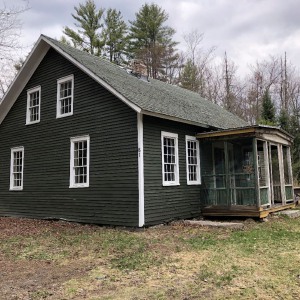 Hanover house added to New Hampshire Register of Historic Places
Hanover house added to New Hampshire Register of Historic Places
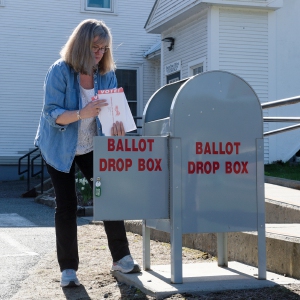 Sharon voters turn back proposal to renovate school
Sharon voters turn back proposal to renovate school
“It was so aggressive that it chased the bears off,” Whipple said. “That just shows how aggressive these things are. It chased off a mama bear.”
Luckily, the animal killed by USDA officials wasn’t female, Whipple added. “Especially a pregnant female,” he said. They have short gestation periods, and can multiply quickly.
“They can sometimes have up to 13 piglets,” he said, and an escaped pregnant feral swine is the fastest way to establish a breeding population.
That would be “utterly destructive,” Whipple said.
Feral swine are descendants of escaped or released domesticated pigs. Each year, the animals cause upwards of $2.5 billion in damage to agriculture, natural resources and personal property, according to the USDA.
The animals, which are highest in population density in the southern U.S., trample crops and pasture grasses. The ruts caused by “rooting” behavior, can make it virtually impossible for a farmer to drive a tractor through a field.
The animals are also major consumers of mast crops, such as acorns and beech nuts. The eating habit interferes with seed dispersal and “can actually change forest tree species diversity and density,” said David Sausville, Wildlife Program Manager with the Vermont Department of Fish and Wildlife.
The lab tests also could confirm the presence of disease in the swine killed in July, but might not be returned for a number of months, Sausville added.
Feral swine can be petri dishes of diseases, and including at least 30 viral and bacterial illnesses, as well as nearly 40 parasites that can be transmitted to humans, pets, livestock and other wildlife, according to the USDA.
But despite threats to property and other animals, there is generally no need for humans to be concerned about their own safety, Whipple said.
Anyone who thinks they may have spotted a wild boar should call their local game warden, or the USDA’s Vermont Wildlife Services division at 603-223-6832.
Frances Mize is a Report for America corps member. She can be reached at fmize@vnews.com or 603-727-3242.

 Art Notes: Canaan Meetinghouse showcase brings musicians and listeners together
Art Notes: Canaan Meetinghouse showcase brings musicians and listeners together A Look Back: Upper Valley dining scene changes with the times
A Look Back: Upper Valley dining scene changes with the times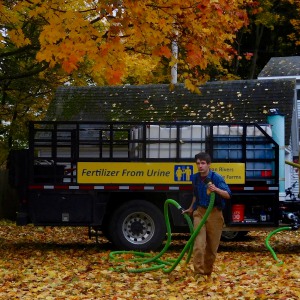 The future of fertilizer? Pee, says this Brattleboro institute
The future of fertilizer? Pee, says this Brattleboro institute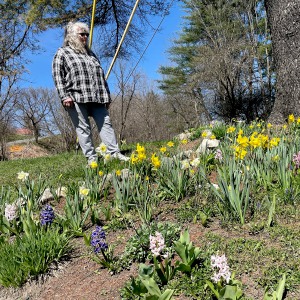 From dirt patch to a gateway garden, a Randolph volunteer cultivates community
From dirt patch to a gateway garden, a Randolph volunteer cultivates community 
